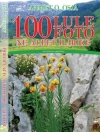Advance in barley sciences presents the latest developments in barley sciences. It collects 39 papers submitted to the 11th International Barley Genetics Symposium, and covers all presentation sessions of the conference, i.e., barley development and economy, utilization
of germplasm, genetic resources and genetic stocks, end-uses, biotic stress tolerance, abiotic stresses, new and renewed breeding methodology, barley physiology, breeding success stories, barley genomics and all other ‘-omics.’ Th e information will be useful
for barley breeders, brewers, biochemists, molecular geneticists and biotechnologists. Th is book may also serve as reference text for students and scientists engaged in barley research.
Dr. Guoping Zhang is a barley breeder and crop physiologist at the Department of Agronomy, Zhejiang University, China.
Dr. Chengdao Li is a senior molecular geneticist and barley breeder at the Department of Agriculture and Food, Western Australia, Australia. He is also an adjunct professor at Murdoch University of Australia and Zhejiang University.
Dr. Xu Liu, a member of the China Academy of Engineering, is a plant resources researcher at the Chinese Academy of Agricultural Sciences.
Tabela de Conteúdo
Evolution of Wild Barley and Barley Improvement.- Genetic Diversity in Latvian Spring Barley Association Mapping Population.- Genome-Wide Association Mapping of Malting Quality Traits in Relevant Barley Germplasm in Uruguay.- The “Italian” Barley Genetic Mutant Collection: Conservation, Development of New Mutants and Use.- α-Amylase Allelic Variation in Domesticated and Wild Barley.- Novel Genes from Wild Barley Hordeum spontaneum for Barley Improvement.- The Distribution of the Hordoindoline Genes and Identification of Puroindoline b–2 Yariant Gene Homologs in the Genus Hordeum.- Exploiting and Utilizing the Novel Annual Wild Barley Germplasms on the Qing-Tibetan Plateau.- Agronomic and Quality Attributes of Worldwide Primitive Barley Subspecies.- Differences between Steely and Mealy Barley Samples Associated with Endosperm Modification.- Genotypic Difference in Molecular Spectral Features of Cellulosic Compounds and Nutrient Supply in Barley: A Review.- Use of Barley Flour to Lower the Glycemic Index of Food: Air Classification β-Glucan-Enrichment and Postprandial Glycemic Response after Consumption of Bread Made with Barleyβ-Glucan-Enriched Flour Fractions.- Food Preparation from Hulless Barley in Tibet.- Screening Hulless Barley Mutants for Potential Use in Grain Whisky Distilling.- Natural Variation in Grain Iron and Zinc Concentrations of Wild Barley, Hordeum spontaneum, Populations from Israel.- Genes Controlling Low Phytic Acid in Plants: Identifying Targets for Barley Breeding.- Correlation Analysis of Functional Components of Barley Grain.- Genome-Wide Association Mapping Identifies Disease Resistance QTLs in Barley Germplasm from Latin America.- The CC-NB-LRR-Type Rdg2a Resistance Gene Evolved’ through Recombination and Confers Immunity to the Seed-Borne Barley Leaf Stripe Pathogen in the Absence of Hypersensitive Cell Death.- Increased Auxin Content and Altered Auxin Response in Barley Necrotic Mutant nec1.- Vulnerability of Cultivated and Wild Barleyto African Stem Rust Race TTKSK.- Genome-Wide Association Mapping Reveals Genetic Architecture of Durable Spot Blotch Resistance in US Barley Breeding Germplasm.- Genetic Fine Mapping of a Novel Leaf Rust Resistance Gene and a Barley Yellow Dwarf Virus Tolerance(BYDV) Introgressed from Hordeum Bulbosum by the Use of the 9K i Select Chip.- A major QTL Controlling Adult Plant Resistance for Barley Leaf Rust.- Large Population with Low Marker Density Verse Small Population with High Marker Density for QTL Mapping: A Case Study for Mapping QTL Controlling Barley Net Blotch Resistance.- “Deep Phenotyping” of Early Plant Response to Abiotic Stress Using Non-invasive Approaches in Barley.- Barley Adaptation: Teachings from Landraces will Help to Respond to Climate Change.- Development of Recombinant Chromosome Substitution Lines for Aluminium Tolerance in Barley.- New and Renewed Breeding Methodology.- Barley in Tropical Areas: The Brazilian Experience.- Performance and Yield Components of Forage Barley Grown under Harsh Environmental Conditions of Kuwait.- Variability of Spring Barley Traits Essential for Organic Farming in Association Mapping Population.- Barley Production and Breeding in Europe: Modern Cultivars Combine Disease Resistance, Malting Quality and High Yield.- Variation in Phenological Development of Winter Barley.- Leaf Number and Thermal Requirements for Leaf Development in Winter Barley.- Characterization of the Barley (Hordeum vulgare L.) mi RNomea: A Computational-Based Update on Micro RNAs and Their Targets.- The Construction of Molecular Genetic Map of Barley Using SRAP Markers.- Phenotypic Evaluation of Spring Barley RIL Mapping Populations for Pre-Harvest Sprouting, Fusarium Head Blight and β-Glucans.- Molecular Mechanisms for Covered vs. Naked Caryopsis in Barley.
Sobre o autor
Guoping ZHANG has been engaged in plant physiology and breeding for more 25 years, with 250 peer-reviewing papers, including more than 120 papers on the SCI-cited Journal, and 9 books published, including a book published by Springer. He has much experience in international cooperation, once working in University of Tokyo, University of Utsunomiya (Japan), University of Glasgow (UK), University of Tasmania (Australia) and Department of Agriculture, West Australia. In the past 10 years, he finished more than 10 research projects granted by Chinese Natural Science Foundation, GRDC (Australia) and British Council, and supervised 20 graduated-students, including the Winner of National Excellent Doctora1 Dissertation. He is now acting as a member of international organizing committee of the International Barley Genetics Symposium and local Chairman of 11th international Barley Genetics Symposium.












